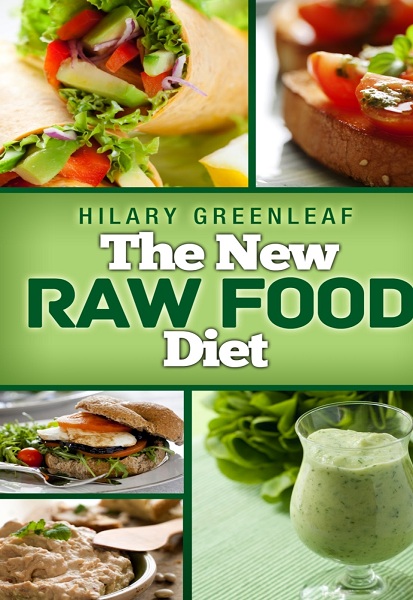The New Raw Food Diet, by Hilary Greenleaf, is an introduction to the raw food lifestyle.
To be completely fair, I should probably start by pointing out that I am not a raw foodist. That is, I do not believe that all of our food – or even 80% of our food – needs to be (or even should be) raw. However, I do believe that most of us Americans could benefit from more raw food in our diets. We eat so much that’s so processed, and even just plain cooked, that we are lacking many of the enzymes that come from raw foods. (It is my opinion that, as in all things, balance is necessary. Cooked foods have different benefits than raw ones do.)
With that said, I enjoy reading raw foods “cook”books, because I could use the ideas for incorporating more of these things into my diet and my family members’ diets.
There are a couple small details in the book that I would quibble with:
1) While it may be true that those on a raw diet have lower “bad” cholesterol, I do not believe this is because animal food contain “bad cholesterol.” Cholesterol is an essential substance in the body, and the body actually manufactures it in whatever quantities it needs. If you eat more cholesterol, your body makes less. If you eat less, your body makes more. If a raw-food diet leads to lower cholesterol, it is probably because of what is in the diet, rather than what isn’t.
2) A technical detail should be added to the information about raw nuts. I don’t know about other nuts, but nowadays “raw” almonds in this country actually aren’t raw. The USDA (or was it the FDA?) a few years back changed regulations and now requires that almonds be pasteurized. But the dishonest creeps still allow them to be labeled “raw.”
3) It is more than simply enzyme inhibitors in raw grains and seeds that makes them indigestible; that’s a bit misleading. The nature of the starches makes them indigestible until they begin to be turned into sugars. That’s a petty detail, but I just have to throw that in there because enzyme inhibitors are getting such a bad rap lately.
With that said, this is a whole ebook, and those are three pretty small details. There is a lot of good information here. Don’t expect a “cook”book, though. There are about 12 pages of recipes, but the focus of the book, overall, is on learning about the raw foods lifestyle. Suggestions are made for foods to stock in your pantry, tools that are useful to have, and frequently-used preparation methods. There’s a whole section about sprouting (with a few ideas for how to use your sprouts).
One of my favorite sections talks about how to eat raw when you’re out and about! This is full of some fantastic ideas for healthier restaurant eating, whether you’re a raw foodie or not. 🙂
After the recipes, there’s a week-long menu for newbies to the raw food diet, utilizing recipes from the book.
This is definitely not going to be your one-stop resource for all things raw foods. But for someone just starting out, it’s a great introduction, covering all of the newbie essentials without overwhelming with excess information. The only thing I might recommend for future editions is a list of recommended raw foods “cook”books at the end.
Disclosure: I received a copy of The New Raw Food Diet ebook to facilitate my review. As always, all opinions expressed here are entirely my own.

I totally agree with you–I would never cut out cooked foods altogether (cooking food makes it delicious!), but raw foods tend to be healthy foods and we could all use some more healthy foods in our diets.
Definitely!